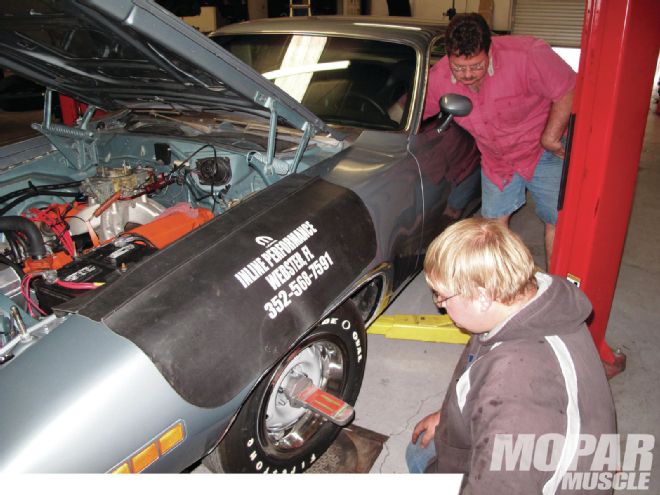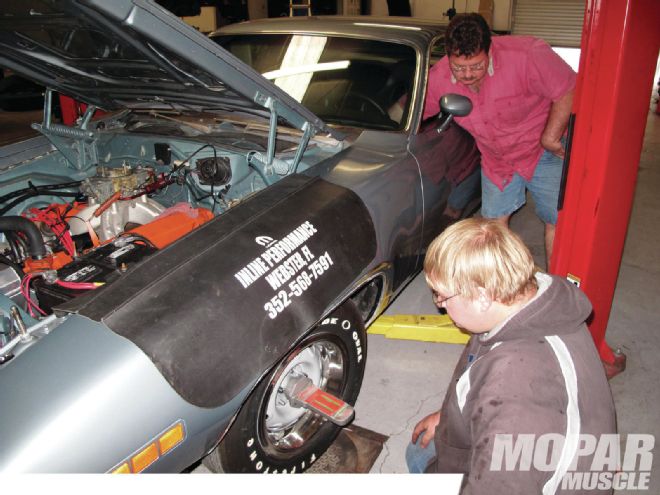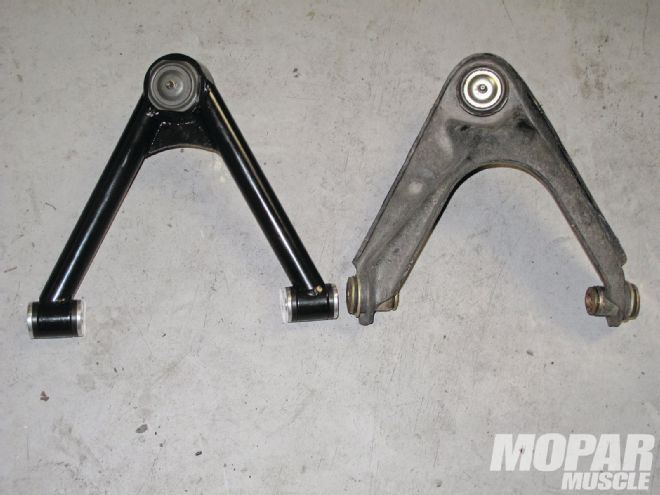
Mopar cars built during the '60s and '70s were some of the most reliable vehicles on the road, and many still drive great even 40 or more years after being built. As with any aging mechanical device, however, wear and tear is to be expected, especially when it comes to cars. Mopar's unibody construction technique was ahead of its time in terms of engineering, but years of driving these cars can cause some annoying suspension anomalies, like the inability to align the front wheels with positive camber.
 Anyone who's ever tried to align a classic Mopar knows that getting the correct caster/camber angle is sometimes impossible. We show you one way to achieve it.
Anyone who's ever tried to align a classic Mopar knows that getting the correct caster/camber angle is sometimes impossible. We show you one way to achieve it.
Our '71 Road Runner suffered this problem, which when the upper control arm cams run out of adjustment before reaching the desired camber setting. In alignment terms, camber is the position of the top of the tire compared to the bottom of the tire, when looking at the tire from the front. If the top leans out farther than the bottom, which is the desired factory setting for most Mopars, it is called positive camber. Aligning the car's front end with slight positive camber results in minimal tire wear at highway speeds. It must be equal on both sides or the car will pull toward the side with more positive camber.
With the factory control arms, our Road Runner was running out of adjustment at one to two degrees of negative camber on the driver side, and neutral camber on the passenger side. This condition is likely caused simply by mediocre manufacturing, combined with many years of driving. With no adjustment left, even with all new bushings installed, we needed to change something. Fortunately, Performance Suspension Technology (PST) has tubular upper control arms available for A-, B-, and E-Body Mopars, that have slightly more distance between the upper pivot points and ball joint. This extra distance allows the ability to align with positive camber, for proper wheel alignment.
 <STRONG>01</STRONG> Compared to the factory control arm, the PST tubular arm is slightly longer from the pivot points at the framerail attaching location to the ball joint. This extra length allows for additional positive camber adjustment, correcting a problem common to many Mopars.
<STRONG>01</STRONG> Compared to the factory control arm, the PST tubular arm is slightly longer from the pivot points at the framerail attaching location to the ball joint. This extra length allows for additional positive camber adjustment, correcting a problem common to many Mopars.
In addition to resolving our alignment issue, the PST control arms come with new bushings, new high-performance upper ball joints, and are both stronger and lighter than the factory stamped steel upper control arms. With the use of a lift at Inline Performance, we had the control arms installed in about an hour, and after putting the Road Runner back on the alignment rack, were pleasantly surprised to find we could now align the front end with two degrees positive camber, and still have plenty of adjustment left on both sides of the car.
With each side of our Road Runner's front suspension now having equal positive camber, our car drives much better, tracking straight even with the nostalgic bias-ply tires. And, while a slight bit of negative camber will result in slightly better handling and stability, the sacrifice for the minimal improvement is tire wear. On a street car like the Road Runner, we wanted the tires to last as long as possible. If we were road racing the car, we would have aligned the car accordingly. The PST upper control arms now allow us to adjust our alignment for aggressive driving, or with the factory, positive camber setting for daily highway driving and reduced tire wear. Of course, there's more to front end alignment than just camber, but these PST parts make correcting camber issues easy.
You might be asking yourself why would you need these upgraded control arms, and we thought the same thing. According to the guys at PST, "Mopars suffer from a lack of suspension adjustability. All available caster is lost during alignment, in order to try and get camber back to spec. This causes instability at high speeds. PST's brand-new G-Max® Tubular Upper Control Arms solve these geometry issues by relocating the ball joint, regaining your adjustability and improving your cornering ability."
Price tag
PartCost PST Tubular Upper Control Arms$349